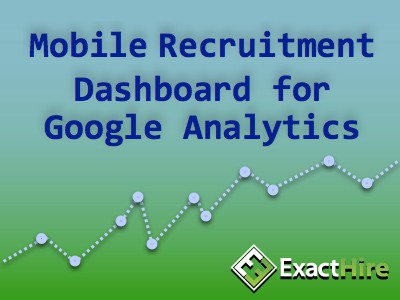Audit Your Recruitment Process Marketing Content to Delight Job Seekers
Use this audit checklist to evaluate and improve the effectiveness of your recruiting process-related content.
I’m not the first one to say that recruiters, human resources professionals and marketing specialists should team up to create content that engages top talent in your recruitment process. However, how many of you have actively engaged in measuring the impact of that HR/marketing “bestie” partnership?
If you don’t have a benchmark from which to grow, your organization will have a tough time figuring out which recruiting content is worth the investment of time and money.
Maximize the effectiveness of your recruiting content with a periodic audit of your hiring process-related promotional assets. Establishing KPIs for content will make it easy to quickly identify existing content gems, as well as guide you in developing additional content that will resonate.
Auditing your recruitment content is as easy as 1-2-3
Let’s examine the audit process and recap with a free recruitment process marketing content scorecard.
1 – Determine your recruitment content audit’s focus
You can’t decide if you’re investing your time and resources to produce recruitment content wisely until you settle on the scope of your audit.
Don’t sweat it if you can’t tackle a comprehensive audit in your first attempt. If you can–great–though it will depend on your recruiting volume and what you’ve previously tackled in terms of content analysis.
It’s okay to segment an otherwise comprehensive audit into smaller sub-audits–just have an overall plan in place for which audit type should be attempted first.
Potential content audit focuses:
- Employment brand quality: consider whether your recruitment content is well written, and whether it aligns with what you’ve defined as your organizational employment brand.
- Hiring process stage: analyze whether a specific hiring process stage is addressed in each of your content assets, and if job seeker questions characteristic of that stage are answered by the content.
- Job board optimization and search engine optimization (SEO): review your job listing rankings on third party job boards and recruitment content performance on external search engines to identify improvements that will create better digital awareness for your employment opportunities.
- Content compliance: examine whether your content meets any industry- and/or government-related compliance requirements for your organization, including an analysis of your career content’s ability to attract a diverse set of job candidates.
2 – Settle on your audit evaluation factors
Your recruiting content evaluation process will be based on the type of audit you select. The audit factors must be easily measurable and align to your project scope.
Because this audit is a wonderful opportunity to connect the human resources and marketing teams in your company, ask the project champions from each of those departments to determine the ideal recruiting content audit criteria.
If we select a hiring process stage audit as an example, then HR and marketing might jointly evaluate factors like the content’s
- alignment with overall employment brand,
- specific hiring stage focus (e.g. awareness, consideration, conversion, retention and advocacy),
- attempt to answer stage-appropriate job seeker questions,
- call-to-action for the next step in the hiring process,
- current distribution and promotion method by stage type, and
- likelihood of being easily utilized by hiring stage stakeholders
As you prepare for an audit, you should also plan your intended project deliverables. Aside from a quantitative score for each recruitment content asset, deliverables can include other action steps to enhance content quality.
Potential hiring process stage content audit deliverables:
- Documentation of all current content assets by hiring stage
- Content gap analysis for certain hiring process stages
- List of questions that individual content assets should answer at each hiring process stage
- Action steps for your content library – content to retain, revise, create or expire
- Template for creating content for each hiring process stage
- Distribution strategy for each asset based on hiring process stage and content type (e.g. owned media such as your own career site, earned media such as a guest blog placement on an industry website, or paid media such as a sponsored job listing on a job board)
3 – Rank your recruiting process content
After you’ve married the appropriate content criteria with each asset, you’re ready to score your recruitment process content!
Please recognize that some things can be quantitatively evaluated (e.g. how many out of X job seeker questions are answered?) while others are subjective (e.g. does the narrative’s language support our employment brand initiatives?).
Now’s your chance to create your own evaluation form to standardize your existing and future recruitment content.
Need some help designing your employer’s scoring process? ExactHire created this recruitment process content scorecard to help you hit the ground running.
Recommendations that resonate
Your audit data is chock full of ideas on where you can start making an immediate impact on your recruitment process marketing. Best of all, it’s backed by a standardized content scorecard.
Use your scorecard analysis to spot trends. Does one aspect of your hiring process consistently fall short? Could others help implement some of the action steps due to their expertise in one stage of the process?
Backed by your audit data, you’re on your way to constructing a high-level recruitment process content strategy that will reinforce your employment brand and help convert more new hires.

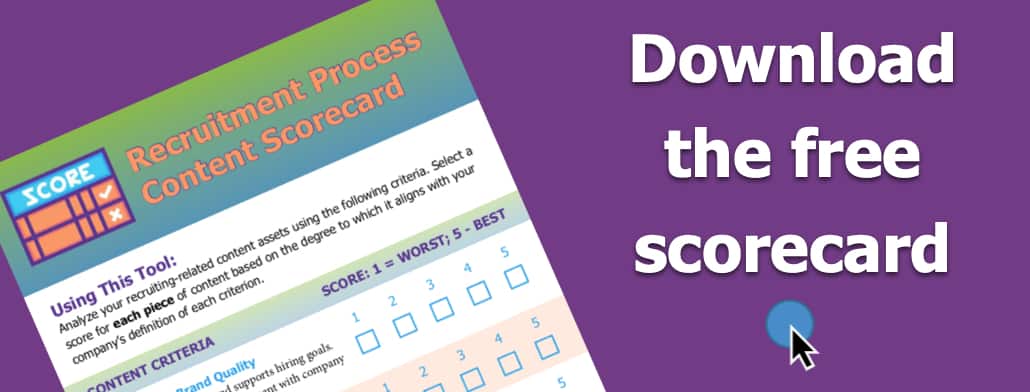
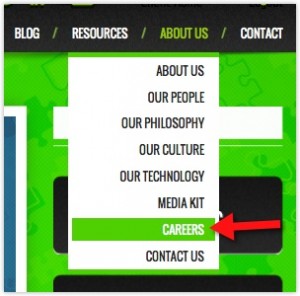 If your organization utilizes an applicant tracking system, then you have the option of easily controlling the presentation of employment-related information on your external ATS site, rather than waiting on your corporate site’s webmaster to make changes to company site pages on your behalf. Some organizations will opt to host career information on the company site and then just list job openings on the ATS site; while others will simply have an “Employment Opportunities” link on the company site that points straight to the ATS site where all employment information is housed.
If your organization utilizes an applicant tracking system, then you have the option of easily controlling the presentation of employment-related information on your external ATS site, rather than waiting on your corporate site’s webmaster to make changes to company site pages on your behalf. Some organizations will opt to host career information on the company site and then just list job openings on the ATS site; while others will simply have an “Employment Opportunities” link on the company site that points straight to the ATS site where all employment information is housed.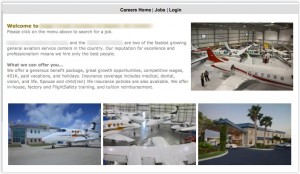 Whether potential applicants are redirected from your main company web page or are referred from job boards or social media sites, it’s important that you have a general welcome page available to provide interested applicants with more information about employment with your organization. People that come to your careers portal after leaving your corporate site will obviously land on your welcome page first; however, those directed from external job boards will land on a specific job description page within your careers site. Nevertheless, before the latter site visitors apply, they may wish to click on your welcome page link in the site navigation and investigate your organization further.
Whether potential applicants are redirected from your main company web page or are referred from job boards or social media sites, it’s important that you have a general welcome page available to provide interested applicants with more information about employment with your organization. People that come to your careers portal after leaving your corporate site will obviously land on your welcome page first; however, those directed from external job boards will land on a specific job description page within your careers site. Nevertheless, before the latter site visitors apply, they may wish to click on your welcome page link in the site navigation and investigate your organization further.
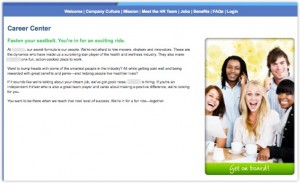 In the age of information, your potential future hires want to find out about your organization when they first land on your careers portal. Make it easy for them by creating links in your site navigation that take visitors to more information about what its like to work at your company. Those of us in Client Services at ExactHire are always pleased to see clients featuring lots of rich, relevant content on their ATS portal – it goes a long way in driving more people to your site, as well as engages them to be more likely to finish submitting an application. Here are some ideas on content to feature:
In the age of information, your potential future hires want to find out about your organization when they first land on your careers portal. Make it easy for them by creating links in your site navigation that take visitors to more information about what its like to work at your company. Those of us in Client Services at ExactHire are always pleased to see clients featuring lots of rich, relevant content on their ATS portal – it goes a long way in driving more people to your site, as well as engages them to be more likely to finish submitting an application. Here are some ideas on content to feature: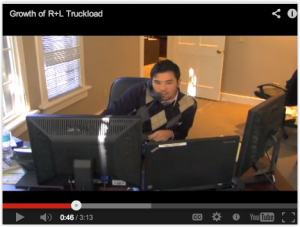 Who better to convince job portal visitors to apply than your current employees who love their jobs! If you haven’t already, round up a group of your top talent…particularly, the individuals who truly are employment brand ambassadors for your organization. Once assembled, solicit your team for candid testimonials about why they work at your business. Pose different questions to different people so you have some variety in your responses when you feature their statements on your employment site:
Who better to convince job portal visitors to apply than your current employees who love their jobs! If you haven’t already, round up a group of your top talent…particularly, the individuals who truly are employment brand ambassadors for your organization. Once assembled, solicit your team for candid testimonials about why they work at your business. Pose different questions to different people so you have some variety in your responses when you feature their statements on your employment site: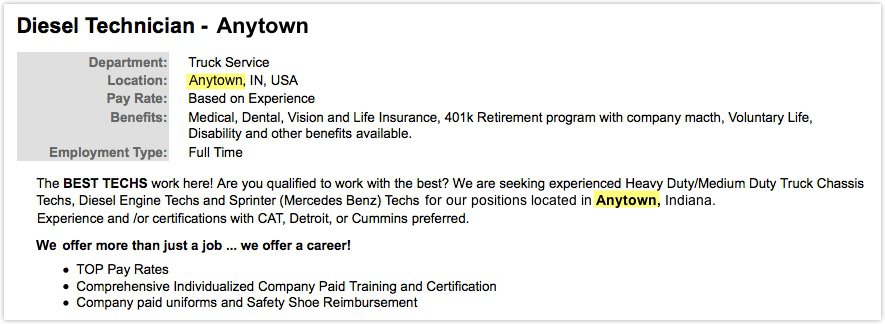

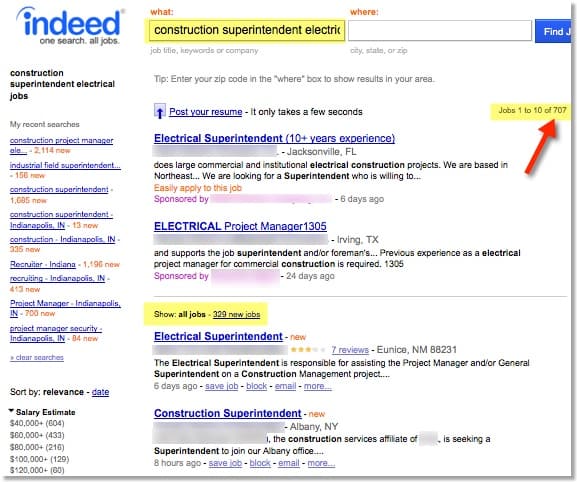
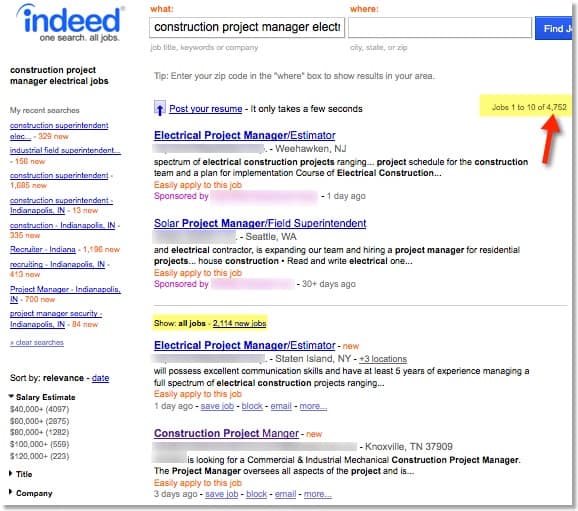
 This may be the most obvious and already widely used idea; however, it just might be one of the most effective for engaging your site visitors to stay on your pages longer. A wide variety of subject areas can be covered on the branded careers portal available through your
This may be the most obvious and already widely used idea; however, it just might be one of the most effective for engaging your site visitors to stay on your pages longer. A wide variety of subject areas can be covered on the branded careers portal available through your 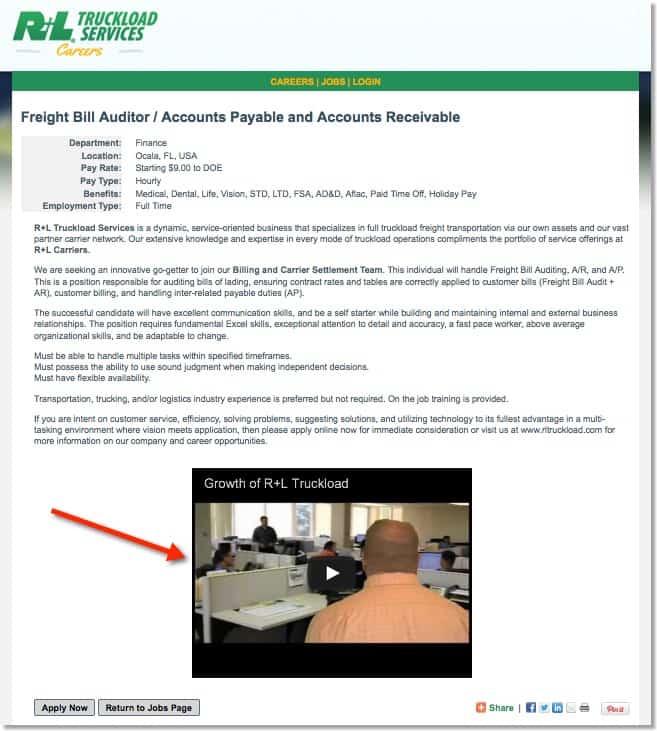
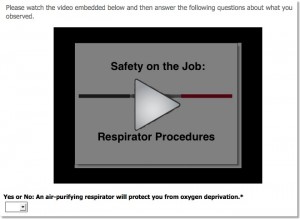 If certain positions available in your organization require heeding important safety procedures or following certain protocols, then consider the benefits associated with embedding a video for applicants to watch during their employment application submission. This can be a powerful way of better qualifying your applicants for a position that normally attracts a high volume of application submissions – especially if many of the submissions have traditionally been from people who aren’t qualified or truly engaged in the role.
If certain positions available in your organization require heeding important safety procedures or following certain protocols, then consider the benefits associated with embedding a video for applicants to watch during their employment application submission. This can be a powerful way of better qualifying your applicants for a position that normally attracts a high volume of application submissions – especially if many of the submissions have traditionally been from people who aren’t qualified or truly engaged in the role.